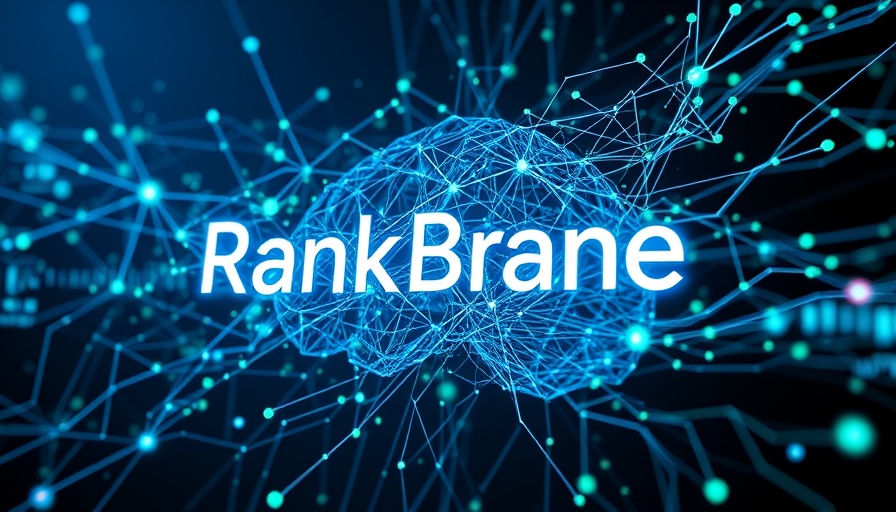
RankBrain and the Evolution of Keyword Strategies
In today’s digital landscape, understanding how Google’s RankBrain functions is pivotal for professionals, business owners, and marketers aiming to refine their keyword strategies. RankBrain, part of Google's AI-driven search algorithm, redefined the way we approach keywords. Unlike traditional algorithms that primarily relied on exact match phrases and the number of keywords in content, RankBrain incorporates machine learning to understand user intent behind searches.
Breaking Down RankBrain: How Does It Work?
RankBrain processes queries through a process of contextual interpretation. Instead of focusing solely on keywords, it takes into account the latent semantics of language—allowing it to discern variations of words and phrases that carry similar meanings. This shift means that marketers must broaden their keyword strategies to include related terms and questions users might have. A clear example is the shift towards answering user queries directly through content rather than merely listing keywords in a visible format.
The Shift Towards Semantic Search and User Intent
This evolution towards semantic search emphasizes understanding the user. Today, businesses need to create content that genuinely addresses user questions or problems. By adopting a 'user-first' approach, coupled with insights gained from analytics and data reporting, companies can tailor their SEO strategies accordingly.
The Impact on Content Creation and Marketing Strategies
With RankBrain modifying traditional SEO practices, content marketing strategies have also adapted to these changes. Marketers are encouraged to focus on high-quality content that answers queries comprehensively. This shift can lead to improved customer engagement strategies, as consumers increasingly seek direct answers to their questions, fostering a more meaningful connection with brands. Tools like Google Analytics help marketers assess which content is performing well and meeting user needs.
Future Predictions: What Lies Ahead for SEO Strategies?
The landscape of SEO is ever-evolving, and with updates like RankBrain, it is clear that the use of AI in SEO will grow. Professionals in the field should be prepared to integrate advanced AI and analytics tools into their marketing efforts. Predictive analytics and user experience optimization will be fundamental to navigate this future, focusing on how consumers interact with content on various platforms—from mobile devices to voice searches.
Counterarguments: Are Keywords Still Relevant?
Despite the increasing importance of semantic searches and user intent, some argue that keywords retain their place in SEO strategies. While the focus is now on high-quality content, keywords continue to play a role in helping content get discovered. Therefore, a balanced marketing approach that harmonizes the use of traditional keyword optimization with broader content strategies yields the best results.
Actionable Insights: Adapting to the New Norm
To successfully navigate the changes brought forth by RankBrain, marketers must embrace flexibility in their SEO practices:
- Analyze and adjust keyword strategies to encompass variant terms related to user intent.
- Create comprehensive, engaging content tailored to answer direct user queries.
- Utilize marketing automation tools to optimize user engagement and conversion tracking.
As the digital marketing landscape evolves, refining your approach to align with RankBrain's capabilities is invaluable. Consider implementing these strategies into your daily practices to stay ahead in a competitive market.
 Add Row
Add Row  Add
Add 




Write A Comment